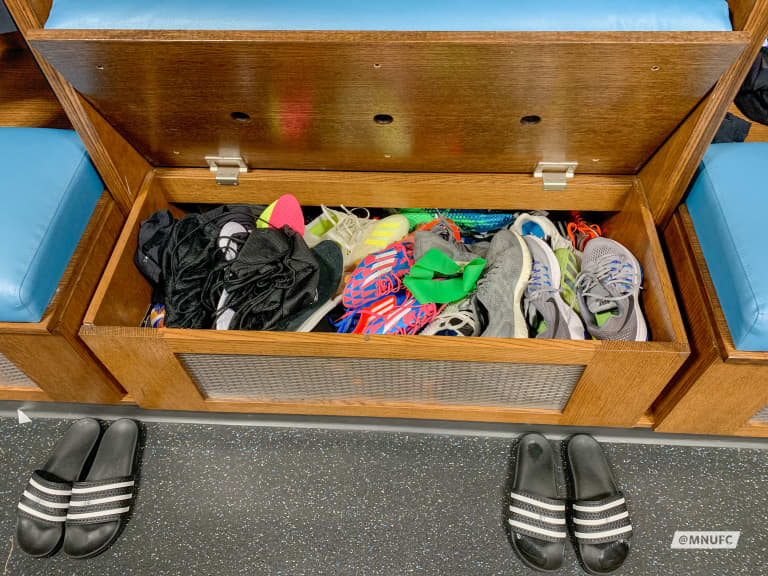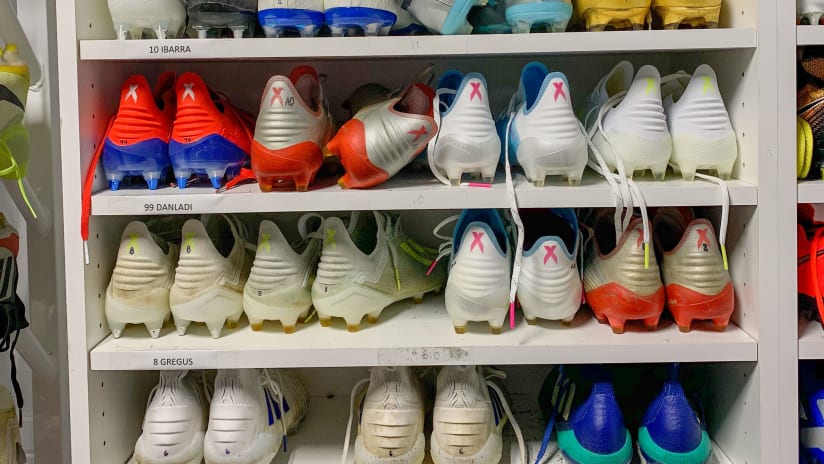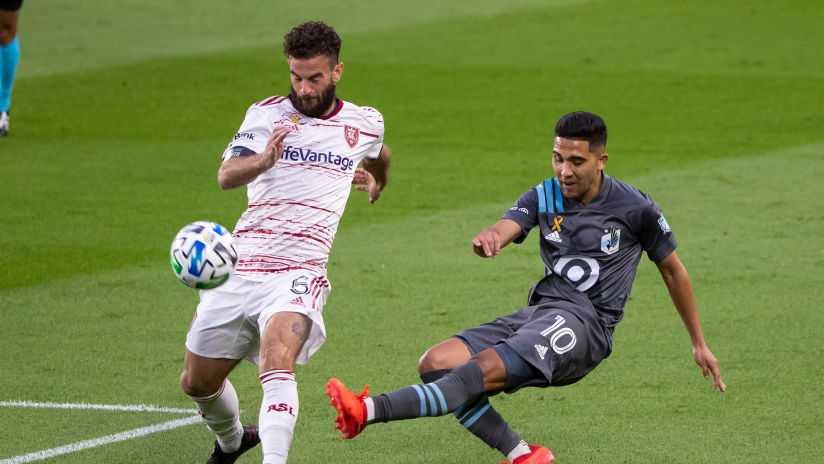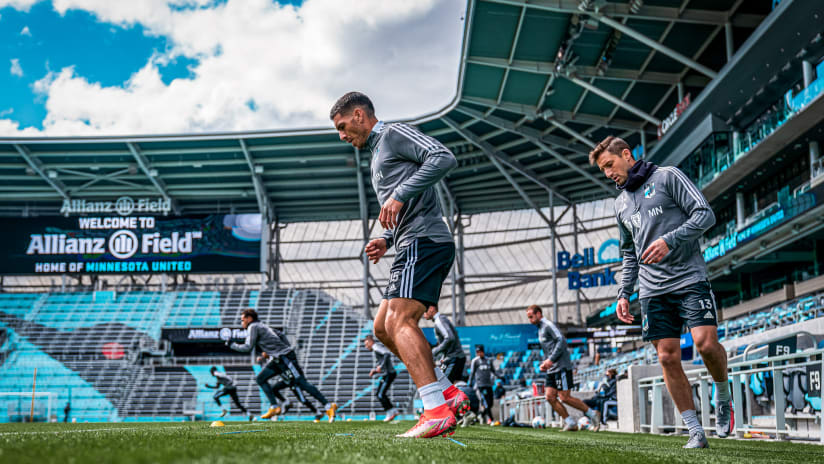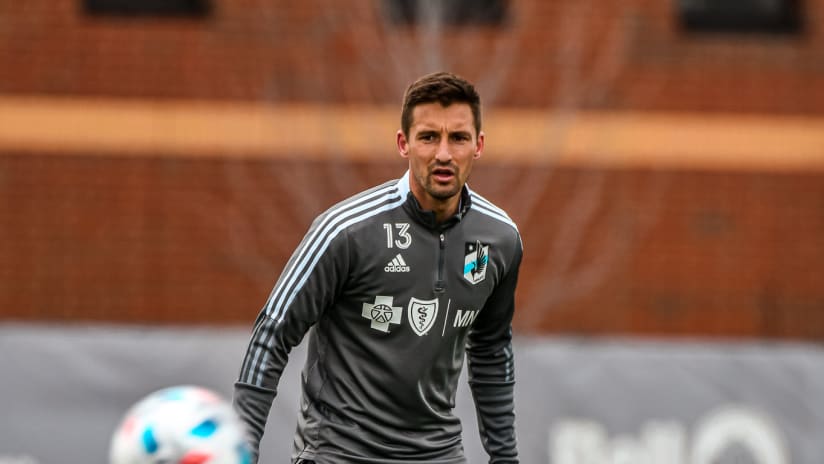Osvaldo Alonso grew up playing soccer, and he grew up playing it in whatever boots he could get. Whenever he got a pair, he would hang onto them. “If they break, you have to fix them and keep going,” he says. “It was hard to get cleats.” Over time, the boots would practically become part of his feet.
Now, as a professional soccer player in his adopted home of the United States, the cleats come to Alonso and the rest of Minnesota United by the truckload. When a new shipment of around 15 gigantic boxes full of brand new boots for the team arrives at the National Sports Center, it’s the job of equipment managers Ryan Natusch and Sean Bigness to get the new colorways – the latest colors and editions provided to clubs during the season – out to the players.
It’s the player’s job to break their new boots in. And — of course — there’s more than one way to do it.
If you’re Ethan Finlay or Jan Gregus, you like super tight boots. It takes around two weeks to break these boots in. Because they’re so snug, they can only be worn comfortably for a short period of time. The boots will be worn during training until the player can’t take the discomfort anymore, and then they’ll be swapped out with an old pair to finish the session. This gets repeated day after day.
Boots can also be broken in more mechanically with the help of a boot stretcher or the hydrocollator. A machine whose primary purpose is to allow the training staff to keep compresses hot, the hydrocollator is filled with hot water and has just enough space at the top for a pair of cleats. The boots come out flexible and ready to be molded to a player’s feet.
“And then the fourth way, which I’m sure a lot of people will relate to, is they’ll wear them in the shower,” says Bigness. “When Wilfried [Moimbé-Tahrat] got here, he took boots home with him to wear them in the shower.”
Before the cleats hit the grass at Allianz Field, though, they have to go through the paces on the training pitch. A training day begins when Bigness pulls into the parking lot at 7:45 a.m. and heads into the training facility. His first task is taking the boots from the boot dryer – a machine that air dries the boots with heat to remove moisture and prevent the growth of bacteria – and places them in each player’s shelf. Each shelf holds three pairs of boots, which is the typical number of boots in rotation at once for every player.
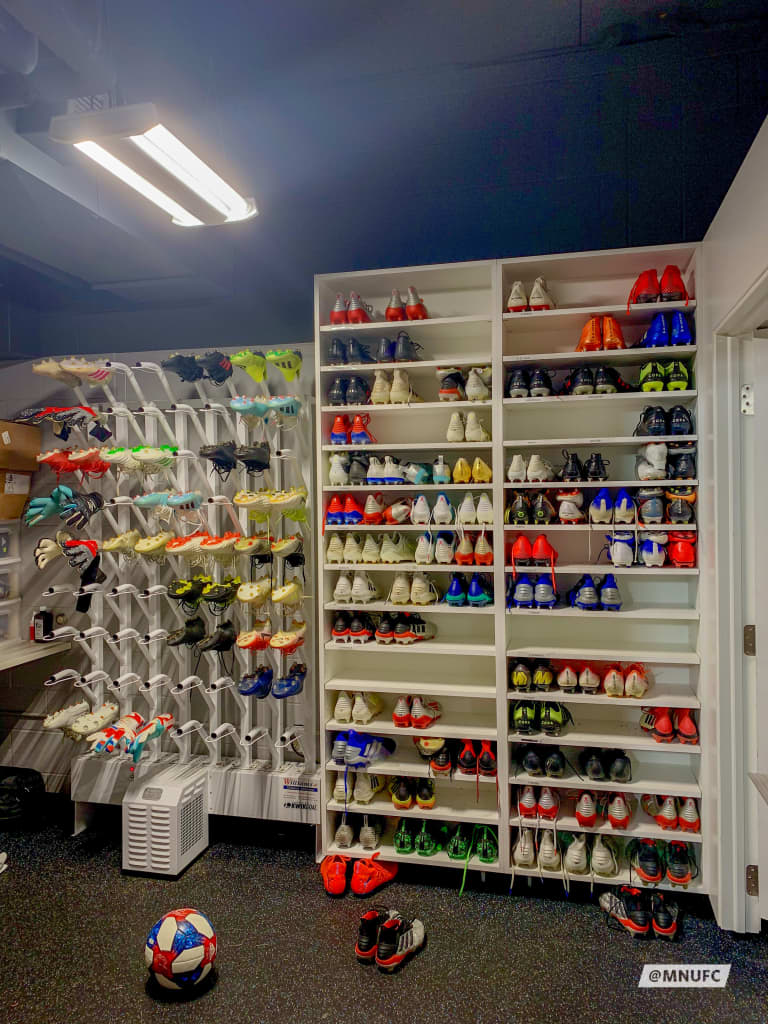
Some players, like Miguel Ibarra, will have more boots than that in rotation at a time. In Ibarra’s case, sometimes four times as many.
“I know Miggy [Ibarra] will change them quite often,” says Bigness. “He has a special relationship with his boots. He likes to put boots in time out and he likes to keep some in rotation. But he’ll generally give some a break if he’s felt he’s had bad luck, and wear ones more often if he’s done well. He’s very much go-with-what’s-worked and if it doesn’t, then he’ll put them away for a bit.”
But generally when gameday arrives, three pairs of boots make the journey to Allianz Field or on the road for each player — one pair of soft grounds, which have metal studs and are worn for wet ground, and two pairs of firm grounds. Firm grounds are intended for drier grass and are the standard boot that most people who play recreational soccer are accustomed to wearing.
“The goalkeepers will usually just bring their soft grounds if we’re playing on grass, because the backline of the team – all four defenders and the goalie – generally will wear soft grounds, only, because they prevent slipping,” says Bigness.
Goalkeeper Vito Mannone always strives to match his soft grounds with his gloves. For Mannone, this is the most important part of his game.
“This is something, I think, most of the keepers – if you ask, or maybe it’s only me, I don’t know – I think most of the keepers like to match their gloves and boots,” says Mannone. “Looking nice makes you feel better and makes you feel better on the pitch somehow. So, that’s the trick.”
Before long, there’s another shipment of 15 boxes arriving at the National Sports Center, and the cycle of breaking in the boots begins again. But that’s not the end of the story for the boots the players have been wearing. In fact, it’s really just the beginning.
Players like Alonso, Abu Danladi or Angelo Rodriguez collect the used boots in the drawers under their lockers until there’s enough to be shipped back to their home countries. At least some of the boots will find themselves on a 1,781 mile trip to San Cristobal, Cuba, where they’ll end up on another player’s feet.
“I take cleats to my friends and to the National Team. Whenever my family goes there, I try to send with them,” says Alonso. “Every time I have a chance to send cleats to Cuba, I do it because I know it’s hard to get.”
